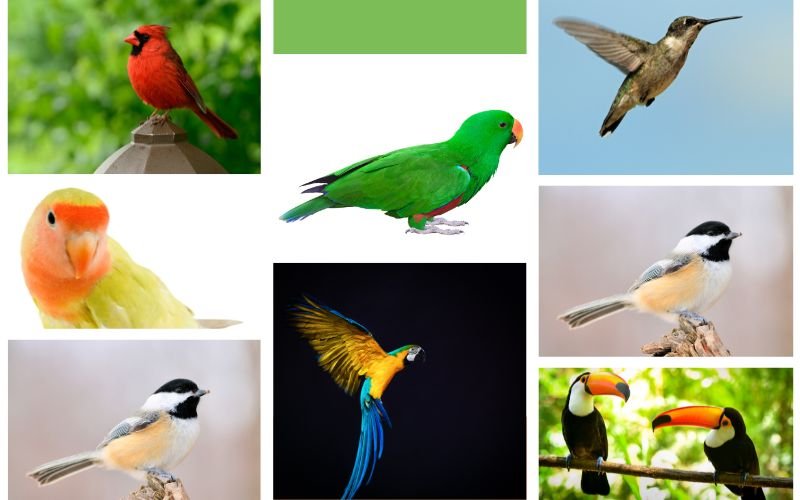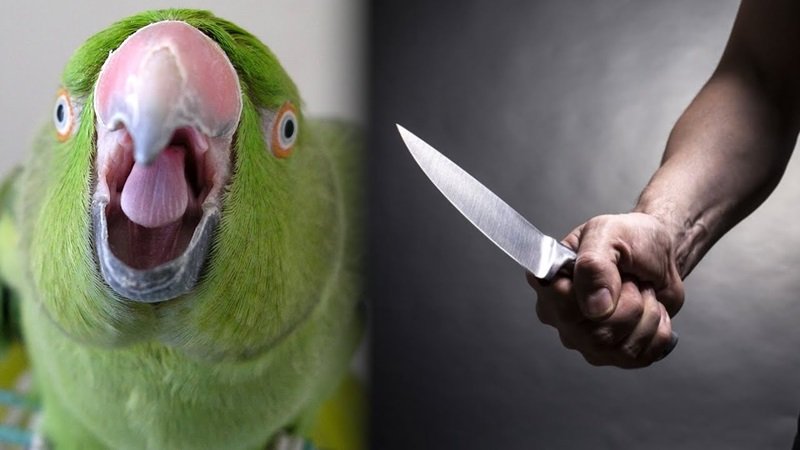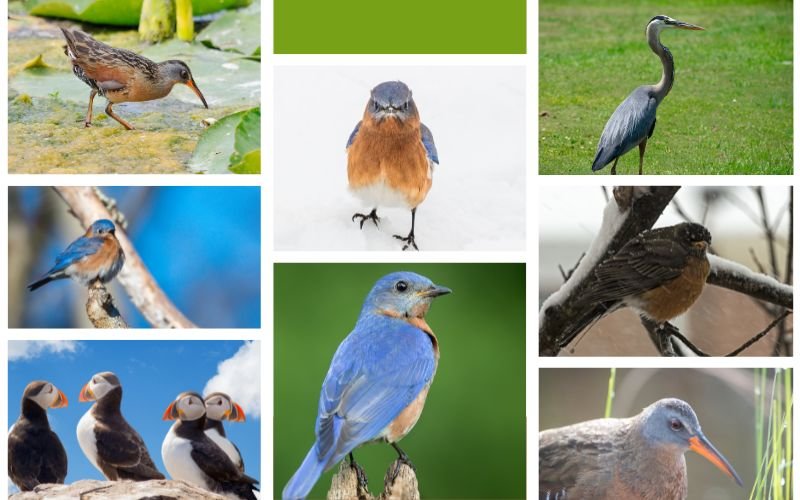Are you interested in expressing your passion for birds? Do you want to about a list of bird names starting with S?
That’s alright! You are not the only one. If it is your first time caring for birds, it may be a surreal, hectic experience. Many people are still figuring out what to do or how to start. Budding bird lovers need clarification about the personalities of each kind of bird and want to learn everything about them.
Instead of learning everything at once, organize ourselves first. One of the easiest ways to learn about birds is by alphabetically looking up various species.
By doing so, you may come across the names of exciting and rare birds that will pique your interest. While you can choose any alphabet and start looking up the birds of that alphabet, one of the most commonly used alphabets to name birds is ‘S.’
For newbie enthusiasts in the bird kingdom, here are a few birds you should know about before starting your journey as a bird’s caregiver.
30 Birds That Start With the Letter S
1. Scarlet Macaw
Known as ‘nature’s fiery rainbow,’ it is hard not to notice the Scarlet Macaw. They are the largest parrot species in the world and are known for their scarlet feathers and colourful rainbow-shaded wings.
Usually perched on tall trees in a tropical climate, they are hardcore romantics who mate for life. Their friendliness also makes them excellent pets.
If you want to feed them, put seeds, fruits, nuts, leaves, and berries in their diet. They are also endangered due to poaching and smugglers, so ensure you can create a safe environment where the Scarlet Macaw will not be threatened (Rainforest Alliance).
2. Snowy Owl
The mention of Snowy Owl may remind many of us about Hedwig from the Harry Potter series. This species of owl is breathtakingly beautiful and serene, with a divine aura that can captivate anyone who sees it. Unlike other owls, they hunt even during the daytime. They can be found loitering in open fields during winter.
If you spot a Snowy Owl anywhere, it is best not to startle or scare them. They are highly territorial and are known to attack in groups.
Remember, Hedwig was a fictional owl, and while she may have been fiercely loyal to Harry Potter, in reality, a flock of Snowy Owls can scare even Voldemort away!
3. Swan
The graceful and majestic Swans possess an irresistible charm. They silently wade through the waters, looking regal. Bird lovers who watch them feel a sense of peace which resonates in their hearts for a long time.
Their snowy white feathers shine under the sun, allowing anyone to observe them. Swans dab into the water to search for food like insects or small fish.
Except for breeding seasons, the Swan is usually friendly and pleasant. So if you hand out a few crunchies and seeds, they will readily come to dab the food from your outstretched palm.
4. Sunbird
These tiny nectar-seeking birds are the jewels of nature. The males have vibrantly coloured feathers, while the females are duller. They are chatty, preferring to rattle or sing in metallic notes.
However, approach them cautiously because they are highly territorial and will not hesitate to attack if they feel threatened.
If you still want to feed them, you can prepare recipes with nectar or sugar water and put them out in a bowl for the birds to stop by in your garden and drink. Please do not make your presence known because they are wary of people and other animals (Thought Co.)
5. Sandhill Crane
People may refer to Lovebirds as the epitome of love and devotion, but the Sandhill Crane represents eternal love. When choosing a mate, they perform mesmerizing dances in the air. When a female responds to them, the sight of two birds dancing together to mate for eternity will make you smile.
They are omnivores and are found mainly near shallow waters, so if you want to feed them, you can put a few berries and seeds in bowls specially made for feeding Sandhill Cranes.
6. Secretary Bird
The Secretary Bird is a scavenger. With a mixture of feathers and scales, the Secretary Birds are quite peculiar looking. It has long legs and thick black feathers.
Found in the Sub-Saharan areas, these birds prefer to walk around. They seldom fly unless it is to mate or to their nests. They are among the two kinds of birds which hunt on the ground.
It will be challenging to feed them because they like to snack on snakes. Moreover, they are endangered due to the destruction of their habitats, and the presence of humans can affect their breeding. So, as a bird lover, it will be best to let these birds be and enjoy witnessing their mating dances.
7. Sparrow
One of the friendliest birds on this list, Sparrows are known for their love of food and the ability to cheer anyone up on a gloomy day.
Their sweet chirping refreshes our mornings, and we cannot help but smile when they flock to our gardens to look for food. They love seeds, so make sure you put out a bowl of seeds for the hungry little birds!
Sparrows tend to nest inside buildings or in cramped spaces inside human habitats. If you encounter a Sparrow’s nest, ensure it remains unperturbed by others.
8. Spoonbill
Just like their name suggests, Spoonbills have a long bill shaped like a spoon. They are pretty elegant diners, preferring to gently sweep their bills sideways to scoop up a fish. With long black legs and creamy white feathers, they are quite a sight to witness.
If you want to spot one, it will be hard because Spoonbills are rare. However, you may find Spoonbill on the coasts of England and East Anglia (RSPB).
9. Shoebill
Some people say Shoebills look like the goofy Dodo. Others say it looks like a Dinosaur, which might attack any moment. The Shoebill is a divisive bird. Its bill is nearly a foot long and looks like a Dutch clog.
This prehistoric-looking wonder of the African region uses its beak to catch fish, snakes, baby crocodiles, and lizards. Despite their dinosaur-like appearance, the Shoebills are surprisingly quiet birds, only clattering their bills occasionally.
However, their appearance has prejudiced a lot of people because many tribes in Africa think they are bad omens and kill them. Others hunt them down for food, and destroying their natural habitats is an increasing concern.
If you find endangered Shoebills being hunted down, contact the nearest animal conservatory to protect them (National Geographic).
10. Starling
The Starlings love to play tricks by mimicking different cries. While many consider these dark birds annoying, they are intelligent and friendly. They will hop around public places, loitering near humans to scoop food in their beaks.
Despite their annoying habits, Starlings are social animals. They will not say no to berries and seeds, so if you hand them out, the little tricksters will happily jump in to eat them.
11. Sage Grouse
With a chubby body and small head, the Sage Grouse is found near the intermountain areas of Western countries. Most of the year, they live quietly in their habitats but can be sensitive if disturbed. They prefer to eat buds, flowers, and insects.
Interestingly, the Sage Grouse mates through lekking, where the male birds gather in one area to attract females. Each male has a lek, and the females visit the leks before choosing a suitable male. Lekking also involves a synchronized display by the males, which is an extraordinary sight.
12. Shrike
Shrikes can sing like angels but do not be fooled by them because they are deadly predators. Shrikes hide their dangerous and volatile attitude with grey feathers and a small demeanour.
They can prey on birds as big as them and use their hooked beak to attack their prey. Then, they paralyze the prey by sharply pecking on their spine and breaking the neck.
However, Shrikes are known to get tangled up in barbed wires and on sharp objects. So, if you have any sharp objects around your garden, then it is best to remove them so that the Shrikes are not harmed. They will not harm humans as long as they are not disturbed (Audubon).
13. Scissor-Tailed Flycatcher
Stout-billed with stiff forked tails, these birds are graceful when flying high. They are a pale grey colour with pink underbelly and black tails, making them quite the charmers. They can fly fast and make loud squeaky noises to defend their territories.
They prefer to eat insects but will occasionally binge on fruits. Leave a few small berries in the garden to attract a passing Scissor-Tailed Flycatcher.
14. Superb Fairywren
Found in the serene terrains of Australia, the Superb Fairywren is known for its bright blue forehead and soft brown feathers on its body. They are known as the Blue Jewel of Australia, and witnessing them is a popular activity among bird lovers who visit the country.
They live in small groups and hop around to assist each other in defending their nests, feeding the young birds etc. The Superb Fairywrens work like a community and are incredibly hard-working. To witness their kinship, you can put bowls of water or small fruits at places where they frequent and witness their highly efficient communal sharing system (Animalia).
15. Sora
They may be secretive and reclusive but Soras are actually quite common in North America. One reason is that they venture out early in the morning or after sunset and fly towards dense vegetation to search for food. They can make soft whinny sounds but they are highly sensitive to loud noises.
If you want to spot a Sora, you will have to try your luck in the morning or in the late evening. They are easily scared so you will have to be quiet and highly alert. Their whinny sounds are more frequent to hear during migration season so you may get lucky and spot one!
16. Stork
When a Stork is spotted, a new season is arriving. They arrive at the end of breeding seasons and are abundant in Europe. Storks are easily identifiable with their white and grey feathers and long legs. However, Storks’ most intriguing aspect is their significance in many cultures.
In Ancient China, Storks were considered to bring good luck. Also, many believe that seeing a Stork in their dreams means that they should find success by following their instincts.
So, if you come across a Stork, you may be blessed with good luck!
17. Satin Bowerbird
Satin Bowerbird is a bird with silky blacking blue feathers, the Satin Bowerbirds are found around the wet forests of Australia. They have a very unique mating ritual where the males decorate a bower. The males make two parallel walls with sticks and decorate them with blue objects which it collects.
They create this extravagant display to impress the females, and once a female enters it, they mate before the female bird leaves to fulfil the nesting duties. The male then proceeds to attract more females.
If you travel to Australia, stop by the Bowers to watch this enchanting mating ritual!
18. Southern Cassowary
Another native of Australia, the Southern Cassowary, has a bright blue head and shiny black feathers on his body. They are often heard before being found but live in the rainforests. They are the silent guardians who dwell in the forests, away from sight.
Cassowary birds like to be in solitary and stay in the same areas. They are also highly territorial because the males will flap their wings and rumble if they meet another male.
However, the females are dominant, so if a male spots a female Cassowary, it will run for its life!
Still, it is best to leave these birds alone because parental males are known to attack humans if they feel their babies are threatened.
19. Straw-necked Ibis
Belonging to the Ibis and Spoonbill family, the Straw-Necked Ibis have straw-like feathers on their necks. Found mainly near the mainlands of Australia and Indonesia, they feed primarily on invertebrates living in water or on land. They are known for their graceful hunting skills and help farmers by eating the pests which can harm crops.
So, if you have a pest problem in your fields, a few friendly Straw-Necked Ibis will undoubtedly have your back!
20. Siskin
These small and sprightly creatures are notable for their fork-shaped tail and the long, narrow bill. The males are yellowish-green in colour, while the females are duller. Found in part of the UK, the Siskin prefer to live around the woodlands.
They are known for their sweet songs, making them Nature’s Tiny Songbirds. They eat spruce, pines, insects, and birches.
If you hear a Siskin singing, you may watch them fly into your garden if you leave out water and food for them.
21. Sulphur-Crested Cockatoo
Playful and vibrant, the Sulphur-Crested Cockatoo is the pet which will brighten up your day. They make loud screeches and constantly want attention, but their fierce loyalty to their masters shows their profound nature. Their diet includes berries, fruits, and nuts.
So, if you are having a gloomy day, trust these playful birds to cheer you up with their shenanigans!
22. Sand-coloured Nighthawk
These pale, sandy-coloured birds are found in the Amazon rainforest. They are nocturnal birds active at night and perch around sandy areas.
They are usually quiet except for the occasional purring at night. Due to their nocturnal nature, they are rarely seen in public. They feed on insects, moths, and termites (Oiseaux).
If you venture around rainforests at any time while travelling, you can put out water bowls for the birds at night, and if lucky, you might spot one sipping away!
23. Sandgrouse
Found in the vast deserts of Asia and Africa, the Sandgrouse is known to fly long distances in search of food and water. With grey or brown coloured feathers, they can both fly and walk at speed. Their tough skin and thick feathers make them hard to kill.
If you go bird watching in a desert, spare some water for these parched birds.
24. Screech Owl
Their haunting calls echo through the night’s darkness. The Screech Owl is usually elusive, but it is not unusual to hear their screeches at night around North America. They live in the woods, hunting for small birds and mice. They may even hunt for Starlings.
The Screech Owl can nest anywhere, so you can put boxes in your garden for them to nest in, but the nighttime screeches may disturb your sleep!
25. Spotted Dove
Known for its soft coos, which soothe the listener’s ears, it is a shy bird in South Asia. They live around residential areas and are pretty docile, but when startled, they make flapping noises and fly away.
They usually like to eat seeds, so if you spot any of them, you can offer them seeds and bird food.
26. Striped Cuckoo
This long-tailed Cuckoo is quite crafty! They are found near Argentina and Bolivia, around the mangrove forests. Striped Cuckoo is mostly known as a bird that lay blue eggs. They are parasitic broods meaning they lay blue eggs in other birds’ nests.
Their preferred nests are the ones made by Wrens and Spinetails. While the Striped Cuckoo can be heard singing sometimes, they are reclusive and prefer to stay alone.
They are hard to spot, so if you venture near their habitats, watch for these sneaky parasites!
27. Silver Gull
Predominantly white, the tip of their wings are black, and their back is greyish. One of the essential features of the Silver Gull is that they are adaptable and can be found almost around any coastal area. Moreover, they are skilled scavengers who steal food from humans or pester people into giving them food.
So, if you go to a beach and see Silver Gulls lurking around, lock your food and items away safely; otherwise, these sneaky scavengers will pillage your belongings.
28. Saffron Finch
These vibrant saffron-shaded birds are like a splash of sunshine, ready to colour the world with its beauty. Commonly found in the open spaces of South America, they are popular pets for their sunny colours. They like to nibble on seeds and grass seeds but also require fresh water.
They are not good at building nests, so if you spot these birds around your home, you can help them by making a makeshift nest in a box.
29. Sagebrush Sparrow
Often seen around the open spaces and sagebrushes of the US, the Sagebrush Sparrow has an enchanting tune which will calm your mind. They keep on returning to their territories.
They hold large territories for themselves. Their diet changes depending on the season. When breeding, they prefer to eat insects, seeds, fruits, spiders, and vegetation, while in non-breeding season, they stick to seeds.
If you want to glimpse Sagebrush Sparrows, you can do so early in the morning during the breeding season. The male birds are sometimes spotted at that time, perched on tall shrubs.
30. Slate-Colored Junco
During the cold and grey winter, the Slate-Colored Junco brings much-needed vibrancy. They are primarily found in North American areas, especially around the forests in Alaska. The males have dark, slated heads with white underparts, while the females are dull in colour.
If you live in the cold regions of North America, leave out some water for these birds and invite them to brighten up your winter garden.
Conclusion
If you are a budding bird lover or want to care for them, research and read up as much as possible about the birds, organize your research alphabetically, understand the birds and their needs, consult experts, and carry out small activities to make your home bird-friendly.
Remember, not all birds are friendly, but small acts of kindness can earn you their respect!













